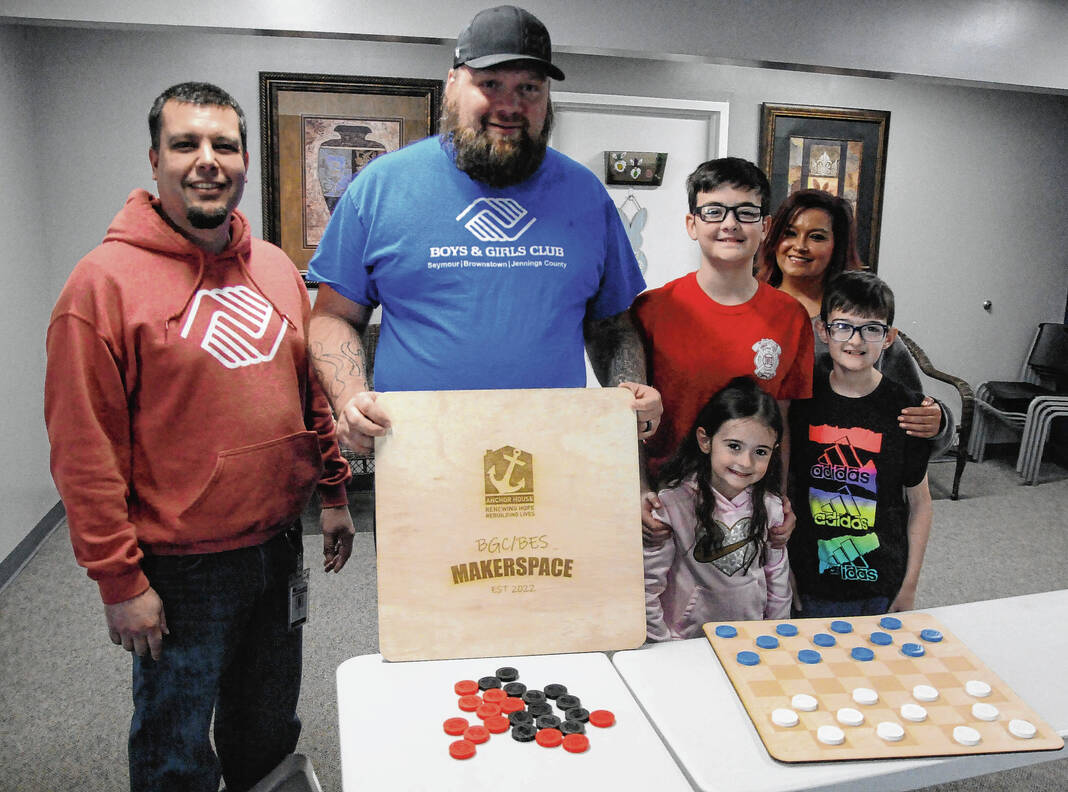
Brownstown Elementary School students who are members of the Boys & Girls Club of Brownstown made eight checkerboards in the makerspace at the school. Two recently were donated to Anchor House Family Assistance Center and Pantry in Seymour. From left are Tim Stair and Paul Ruddick with the Boys & Girls Club, Brownstown students Roman Cherry, Carlyn Cherry and Maksim Cherry and Emily McDonald with Anchor House.
Zach Spicer | The Tribune
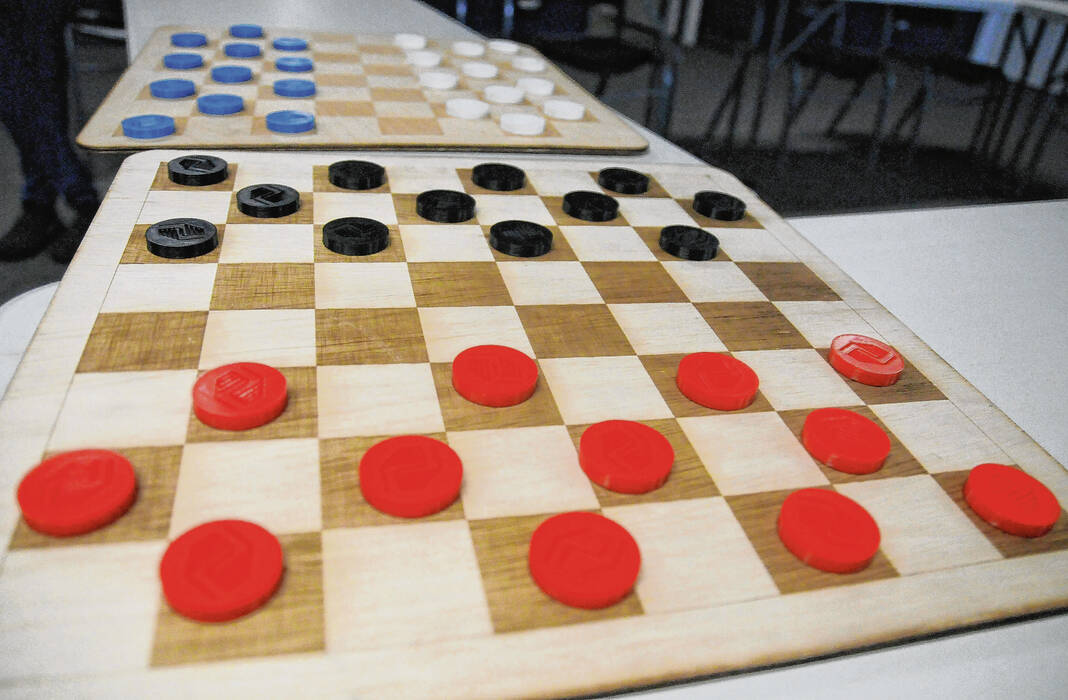
Brownstown Elementary School students who are members of the Boys & Girls Club of Brownstown made these two checkerboards and the checkers pieces in the makerspace at the school. They recently were donated to Anchor House Family Assistance Center and Pantry in Seymour.
Zach Spicer | The Tribune
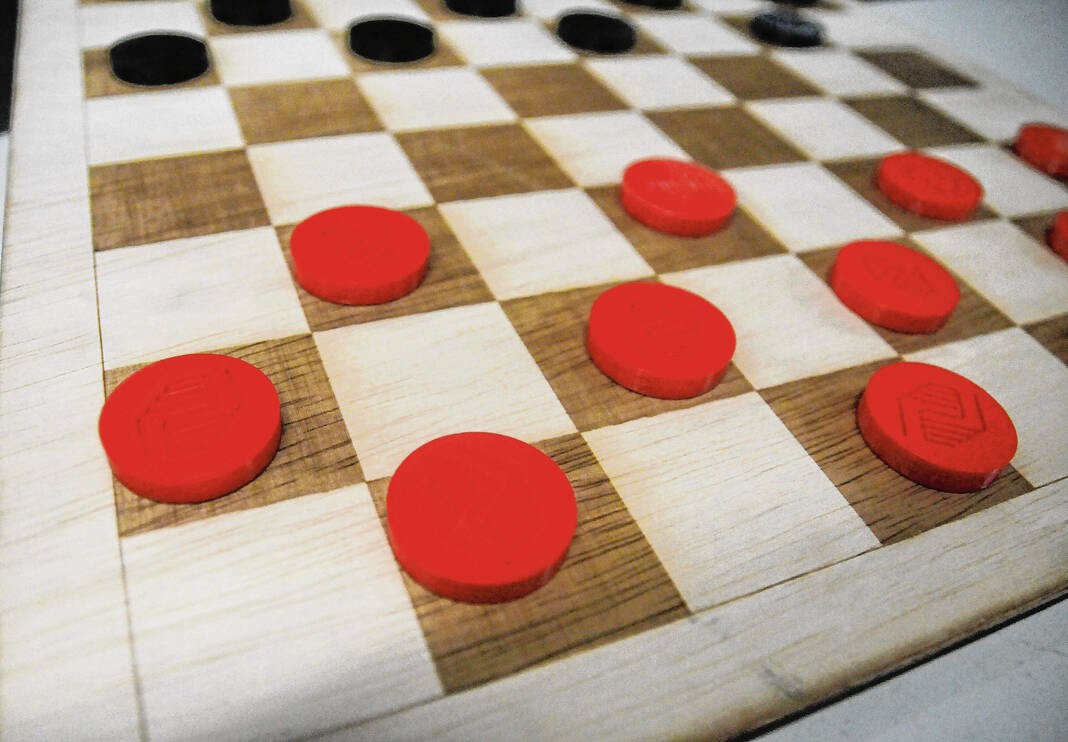
These checkers represent the school colors for Brownstown Elementary School.
Zach Spicer | The Tribune
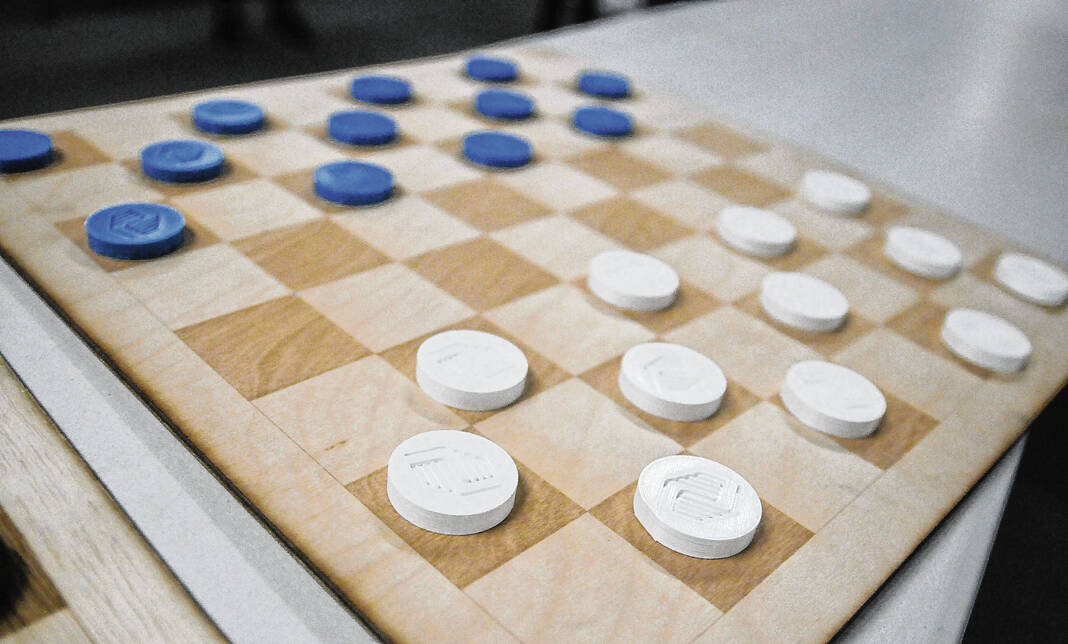
These checkers represent the colors for the Boys & Girls Club.
Zach Spicer | The Tribune
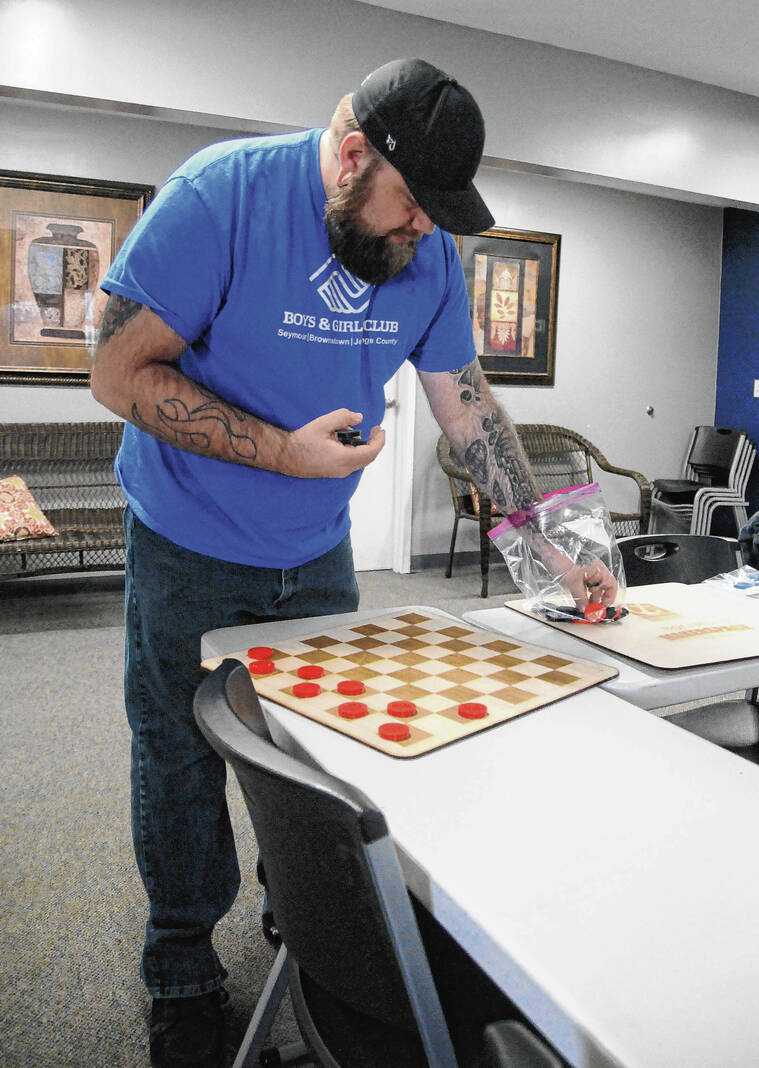
Paul Ruddick, STEM coordinator for the Boys & Girls Club of Brownstown and makerspace teacher at Brownstown Elementary School, puts checkers on a checkerboard that recently was made by students and donated to Anchor House Family Assistance Center and Pantry in Seymour.
Zach Spicer | The Tribune
Emily McDonald recently was told people were going to stop by Anchor House Family Assistance Center and Pantry in Seymour to drop off checkerboards for residents to use in their free time.
Initially, she thought they would be store-bought checkerboards.
When Tim Stair and Paul Ruddick arrived Monday, however, McDonald was handed two handmade wooden checkerboards with plastic checkers.
In talking to the Boys & Girls Club of Brownstown officials, she learned they were made by Brownstown Elementary School students involved in the club at the school, and that work was done in the new makerspace.
A makerspace is a collaborative workspace inside a school, library or separate public or private facility for making, learning, exploring and sharing that uses high-tech to no-tech tools, according to makerspaces.com.
After the students decided to donate the boards and checkers to Anchor House, they personalized the back of the boards with the nonprofit organization’s logo.
“I think it’s amazing, especially whenever they got here and said that they had made them and I saw the back. That’s awesome,” said McDonald, program director for Anchor House.
The organization operates apartments for homeless families with children and a community food pantry at 250 S. Vine St. and a homeless shelter for individuals and families at 326 Dupont Drive.
McDonald said the apartment complex has a room they refer to as “the fish bowl” that has a conference table, a television, two computers, toys, a couch and a play area that’s accessible to residents of all ages.
“We actually have a tic-tac-toe board, so we’ll probably put (the checkerboards) on the table so that they can come and play,” she said. “Kids come down there every day and play.”
She knows they will be put to good use.
“Yep, for sure. I’m excited,” McDonald said.
She told Stair and Ruddick she would send them pictures of kids using the checkerboards.
“That would be awesome. We can put that up on the screen when kids come in the makerspace and see,” said Stair, program director for the Boys & Girls Club of Brownstown.
“I think they would really like that,” said Ruddick, STEM coordinator for the club and makerspace teacher at the school.
This is the second year for the club to exist inside the elementary school after the Boys & Girls Club of Seymour expanded to Brownstown and Jennings County.
It had been an after-school program until this past December when Ruddick went to full-time status and began teaching kids from kindergarten to fifth grade in the makerspace during the school day and then stayed until 6 p.m. to work with Boys & Girls Club members.
“There was a grant that kicked off the whole makerspace, and it was a partnership between the Boys & Girls Club and Brownstown Elementary,” Stair said.
That allowed for the purchase of three-dimensional printers and other equipment for the makerspace.
“When the school year started, they called it makerspace, but it was just kind of like a glorified recess,” Ruddick said. “It was just going there, and there wasn’t a lot of direction with some of the projects. They were more arts and crafts at that time.”
He helped kick the makerspace up a notch, having students make rockets, rubber band cars, checkerboards and more.
Ruddick said he asked the students what they wanted to do in the makerspace and what excites them, and many said they wanted to make games or video games. He brought in an arcade machine he made a few years ago with a 3-D printer and said the kids became infatuated with it.
That led to the decision to make checkerboards.
“Board games are super inexpensive, cheap and we could customize them,” Ruddick said. “It was kind of what fits in the budget. The Boys & Girls Club being a nonprofit, how much can we spend on this? What can we take away from this for this amount of money for this amount of students? This was relatively inexpensive. There’s less than maybe $5 in each game, if that.”
This project introduced the students to the basics of CAD and 3-D printing.
First, Ruddick said they went through the process of how big a checkers piece is and then figured out how to make them on the printer. They had to know how thick the pieces needed to be and how deep they needed to go to put the Boys & Girls Club logo on one side of each piece.
“We had several students actually design the checkers pieces in CAD and do the research of how big is a regulation checkerboard so if you were to go to a checkers championship, these are the right size pieces,” Ruddick said.
The checkers were made using PLA plastic. One board has red and black pieces to represent the BES school colors, and the other has blue and white pieces to represent the Boys & Girls Club colors.
The checkerboards are made of Baltic birch plywood. Students cut the wood into 18-by-18 inches and used sandpaper to clean the edges, and then they went through the design process to put a checkerboard on one side and the Anchor House logo and “BGC/BES Makerspace, est. 2022” on the other side.
“It was a real process and learning experience not only for the individual students but also myself,” Ruddick said of using the makerspace equipment.
“Our rockets was our first project, and that should have been our last project we did because it was so big, but we were able to go through and experience what are these new machines because a lot of people have 3-D printers, laser printers at home now,” he said. “A lot of students don’t have access to it, but they were able to gain access. They know from watching TikTok and YouTube.”
They wound up making eight checkerboards. One was a makerspace kickoff giveaway to make teachers at the school aware of what students could do, one or two will be kept at the club and the students decided to donate the rest.
Anchor House was the first recipient, and they are working together to figure out where to take the others.
“We had several students say, ‘We could give them to homeless people. We could give them to people who need them that don’t have games,’” Ruddick said. “One of the kids was mine. I cried like a baby.”
He said it was great to see the students wanting to distribute the checkerboards to good causes in the community.
The makerspace also has been great for the students because it gives them a safe, fun place to go to learn new things and work together.
“I think just having this structure has helped them gain a lot of responsibility,” Ruddick said.
